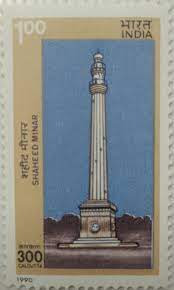Shaheed Minar: A Tribute to Courage and History
The Shaheed Minar, standing tall in Kolkata, is more than just an architectural marvel; it’s a testament to courage, sacrifice, and the indomitable spirit of the people. Let’s explore the history, significance, and awe-inspiring features of this iconic monument.
The Ochterlony Monument
- Origins: The Shaheed Minar was originally known as the Ochterlony Monument, erected in 1828. It commemorates Major-general Sir David Ochterlony, the valiant commander of the British East India Company.
- Dual Commemoration: The monument celebrates two significant victories:
- Defense of Delhi (1804): Major-general Ochterlony successfully defended Delhi against the Marathas.
- Anglo-Nepalese War (1814-1816): The East India Company’s armed forces emerged victorious over the Gurkhas.
Architectural Design: The monument’s design is a fusion of styles:
- Foundation: Egyptian influence.
- Column: Classical fluted column.
- Upper Portion: Syrian inspiration.
- Dome: Turkish style.
- Height: The tower soars to 48 meters (157 feet).
Renaming and Rededication
- Shaheed Minar: On August 9, 1969, the monument was rededicated to the memory of Indian freedom fighters and renamed the “Shaheed Minar” (meaning “martyrs’ monument” in Bengali and Hindi).
- Symbol of Freedom: The renaming honored the martyrs of the Indian independence movement.
- Illumination and Visitors: The present government has decided to illuminate the tower during evenings and allow visitors to the top. Former governor Gopal Krishna Gandhi and his family were among the last to ascend the minar.
Location and Features
- Cloud-Kissing Monument: Mark Twain aptly called it the “cloud-kissing monument.”
- Esplanade, Central Kolkata: The Shaheed Minar graces the north-east facet of the Maidan.
- Architectural Blend: The tower’s foundation, column, and dome blend harmoniously, creating an awe-inspiring structure.
- Balconies and Staircase: Two balconies crown the top, accessible via a serpentine staircase with 223 steps.
- Shaheed Minar Maidan
- Historical Grounds: The vast field south of the Shaheed Minar is known as the Shaheed Minar Maidan or the Brigade Ground.
- Political Rallies and Fairs: The ground witnessed political rallies and fairs. Rabindranath Tagore presided over the first political meeting here in 1931 to condemn the killing of a youth in Hijli by the British.
Conclusion
The Shaheed Minar isn’t merely a monument; it’s a living chapter of India’s struggle for freedom. As you stand before its towering presence, remember the sacrifices and resilience of those who fought for our nation. Visit the Shaheed Minar, absorb its history, and let it inspire your spirit!
Tags:
historic structure
Historical Buildings
History
Indian military
Kolkata
Landmark of West Bengal
military history
Shaheed Minar
Story of India
war
